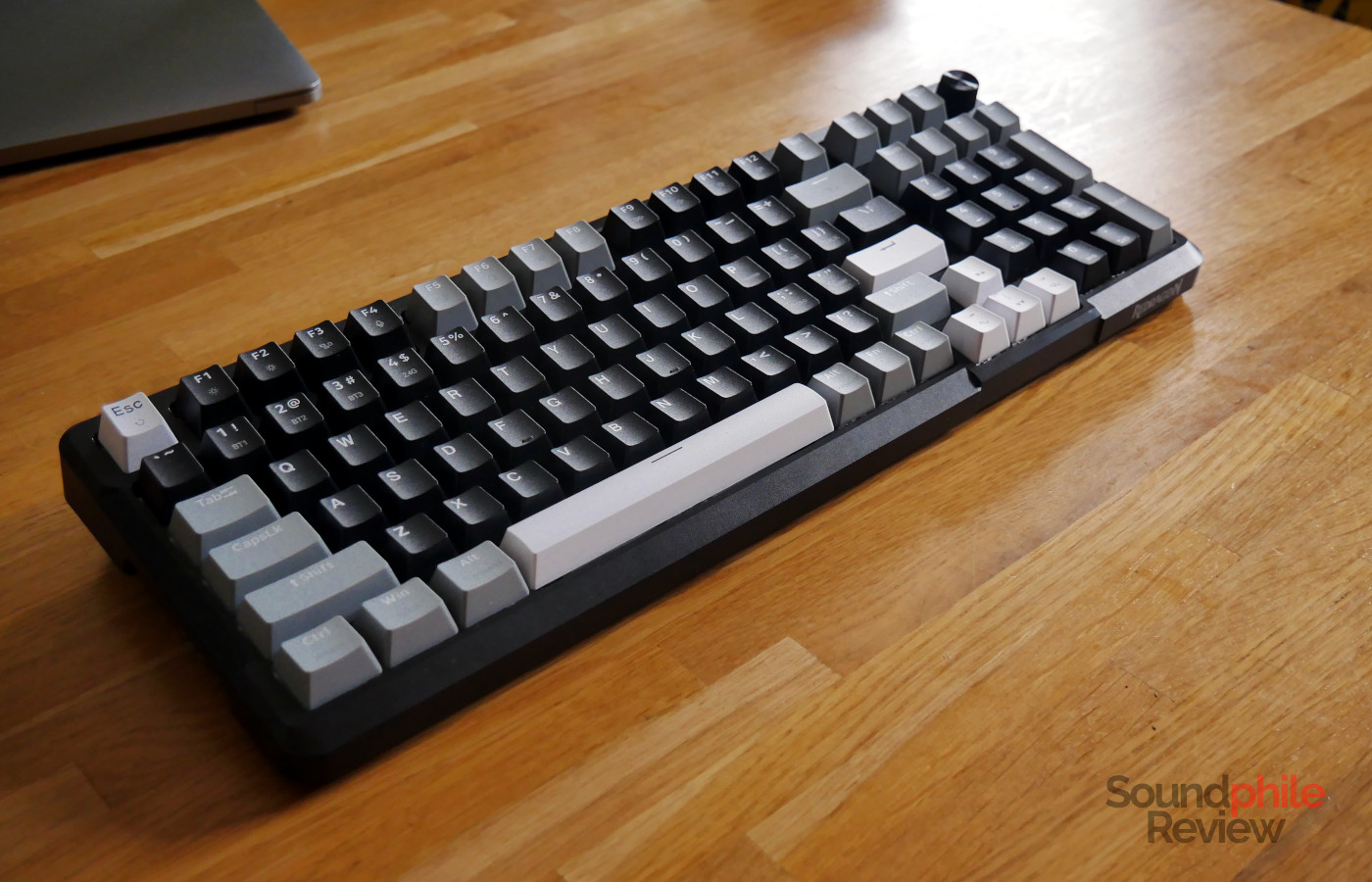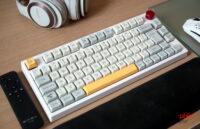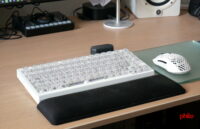If there’s one thing that I’ve liked about the mechanical keyboard world in the past several years is that unusual and innovative layouts have become a lot more commonplace. Fifteen years ago, when I first started to be interested in keyboards (and I bought a Logitech G110, which at the time was considered quite good), you had full-size keyboards and that was basically it. With the rise of mechanical keyboards there was also a boom in different layouts; the Redragon K742 Arlokks takes us almost back with a layout that’s complementary to a TKL: there is the number pad, but no function keys in between. Let’s see how this works.
Disclaimer: I received this unit directly from Redragon for the purpose of this review. The K742 retails for $79.99. Additional information on the official website.
TL;DR: recap
| Pros |
Cons |
| + Good build quality
+ USB, wireless and Bluetooth + Comfortable to type on + Good battery life + Sounds good + Fully programmable with VIA and QMK |
– USB port is on the left hand side
|
Rating: 8/10
Packaging & Accessories
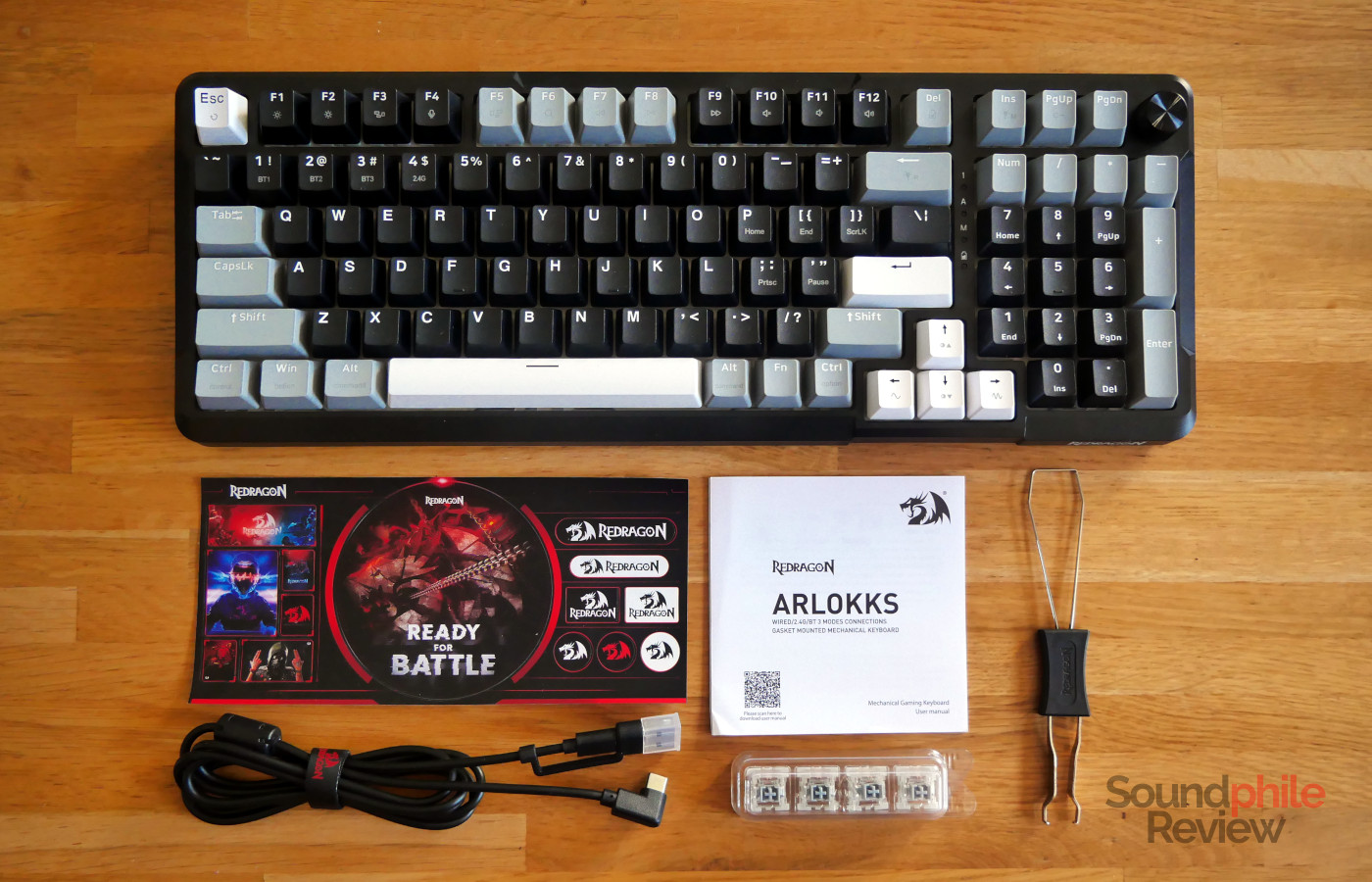
The Redragon K742 Arlokks comes with a combined keycap and switch puller, a USB-C to right-angled USB-C cable (with an adapter to make the straight USB-C connector a USB-A), four spare switches and a manual.
Design & Build
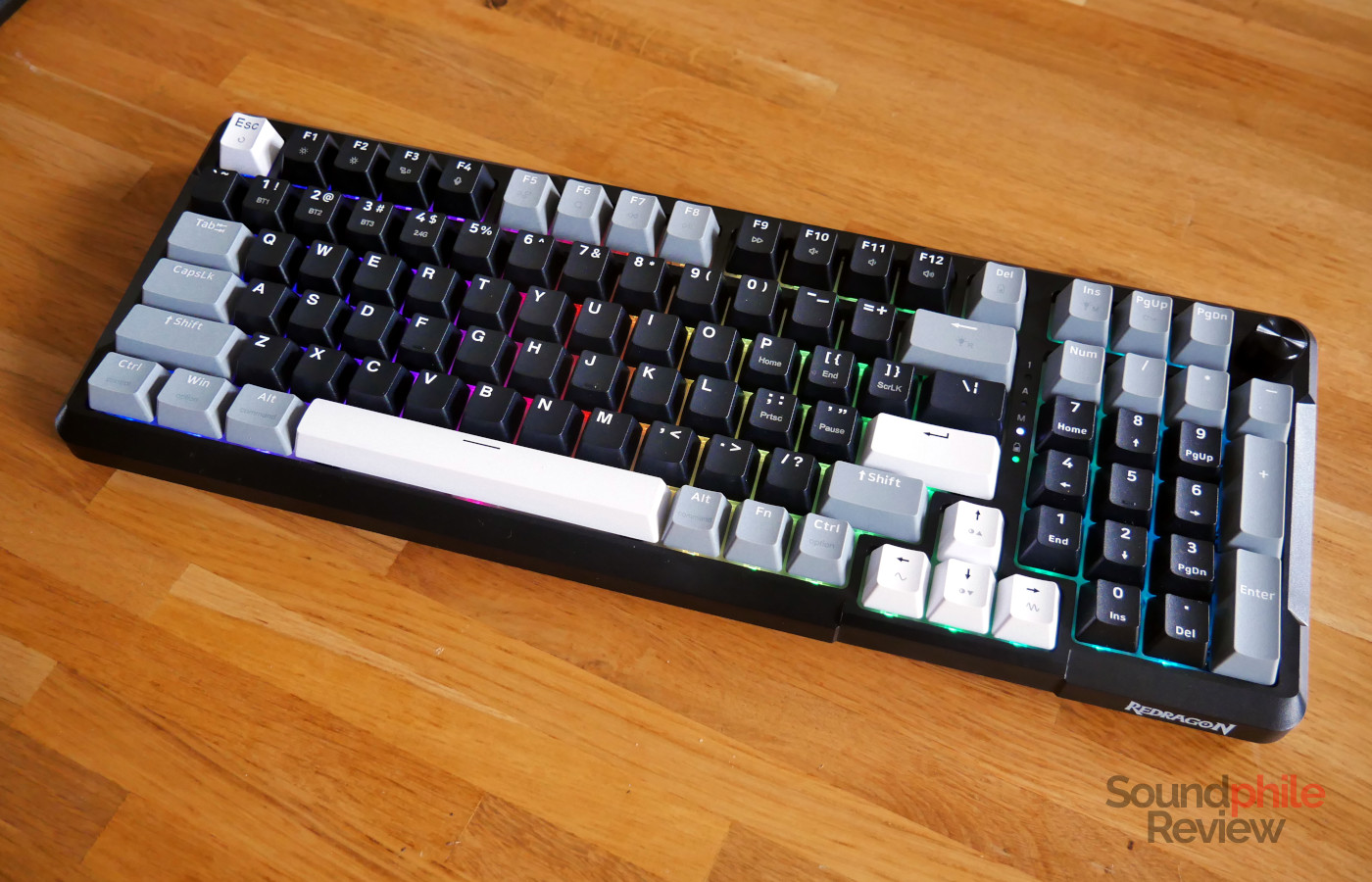
The Redragon K742 Arlokks stands out thanks to its unusual 98% layout: it’s almost a 75%, with a numpad attached to the right hand side. It is therefore quite a bit bigger than usual TKL keyboards, while still being more compact than a full-size. Layout aside, the K742 has a small frame around the keys, which makes it relatively compact (it’s 392 x 144 x 28 mm, excluding the keycaps); there are cutouts which I think are for aesthetical purposes, and the opposite (a bit bulging from the rest) where the arrows are. There is also a clickable volume knob on the top right corner. The chassis is black, which works quite well for the gaming aesthetic that the company went for, while remaining elegant and avoiding gaudiness.

On top of the original layout, the first peculiarity I noticed about the Redragon K742 Arlokks is that it has the USB-C port and the switches to select the connection and the layout (Windows or Mac) on the left hand side, rather than on the back. On one hand this is convenient, because it makes it much easier to see the connector and switches, but on the other is rather inconvenient as having the cable run from the left hand side isn’t as convenient as having it run from the back. The switches are also something you shouldn’t deal with often: not many people switch between multiple devices with different needs. The 2.4 GHz USB adapter has its own slot on the right hand side.

As it is entirely made of plastic, the Redragon K742 is relatively lightweight, at 700 g. There are silicone feet on the bottom, with the top ones being extendable to give the keyboard a further tilt.
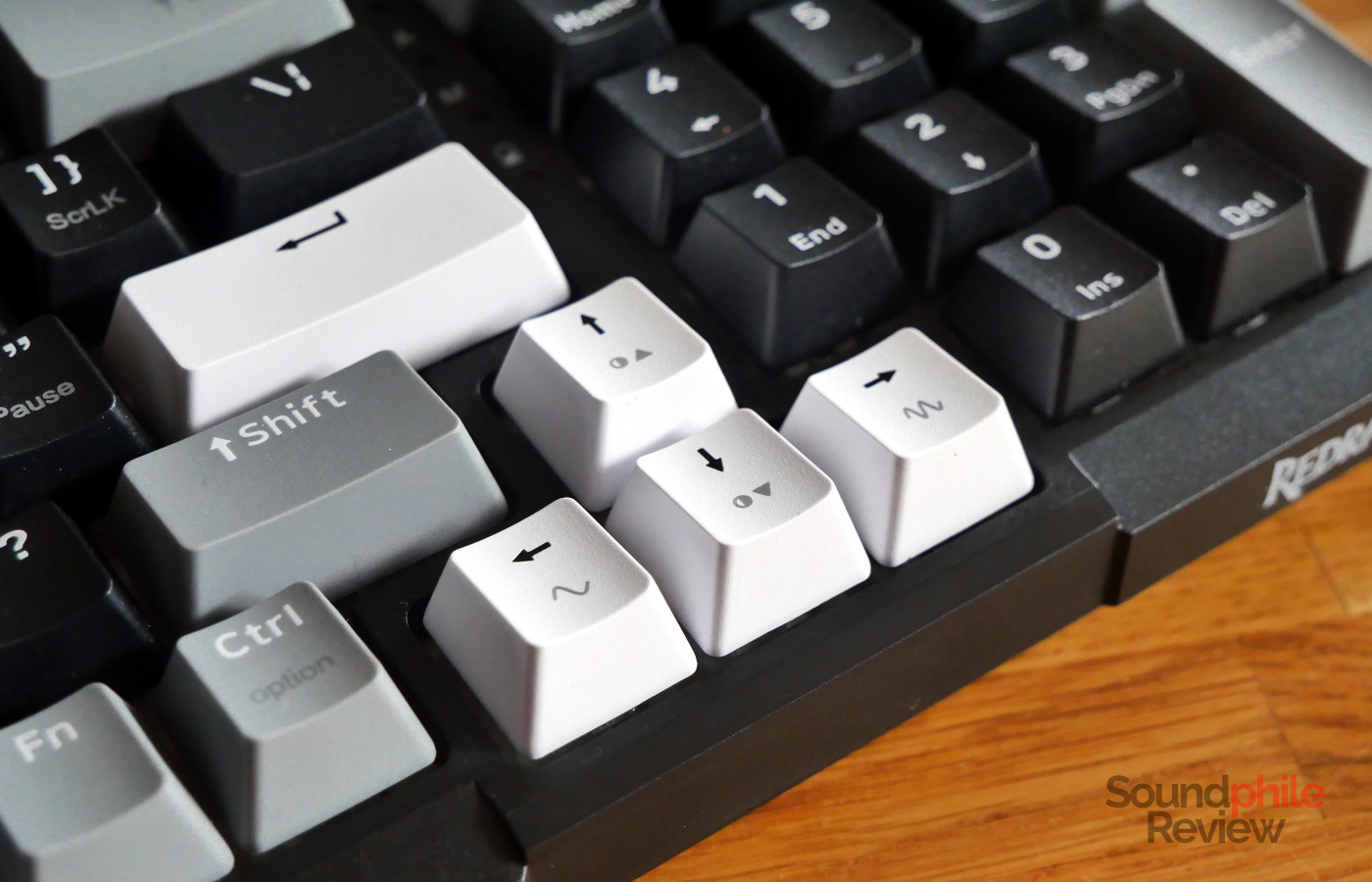
The switches are hot-swap, but they require a significant amount of force to be coaxed into coming out of their sockets. Like most keyboards nowadays, the K742 uses a gasket mount, with five layers of sound-absorbing material (foam and PORON), while the plate is made of plastic. Opening the keyboard is quite easy, as you just need to remove the screws on the bottom, but it is not something that should be needed (nor which is explicitly supported).
Functionality
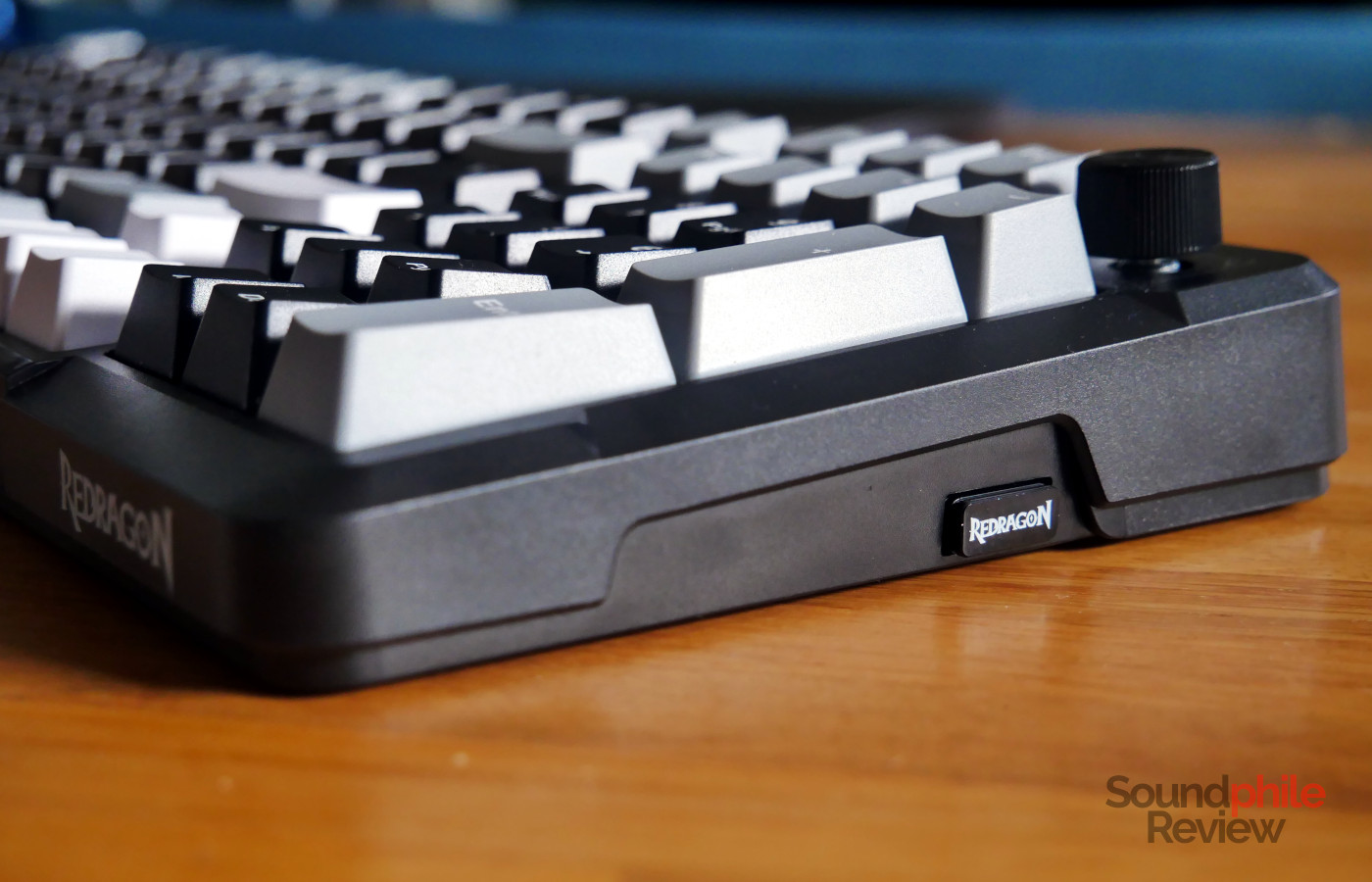
The Redragon K742 is compatible with both VIA and QMK, which makes it very flexible and able to adapt to most needs. It supports connection through USB, Bluetooth or its own 2.4 GHz adapter (which requires a USB-A port). Latency is always small enough that it isn’t noticeable, even when playing games which require a fast response. Redragon does not provide public specifications on latency, polling rate etc, but I asked and they said that the K742 offers 1000 Hz polling rate and 0.1 ms latency for wired connections and 0.2 ms latency for the wireless one (although these numbers are probably at least an order of magnitude too small, given the polling rate). The keyboard supports N-key rollover.
The RGB lighting has 16 different modes, so there are enough to satisfy everyone’s tastes. The keyboard goes into sleep mode if you don’t use it for a minute, but the wake-up is instantaneous and you never lose a single keypress.
Typing
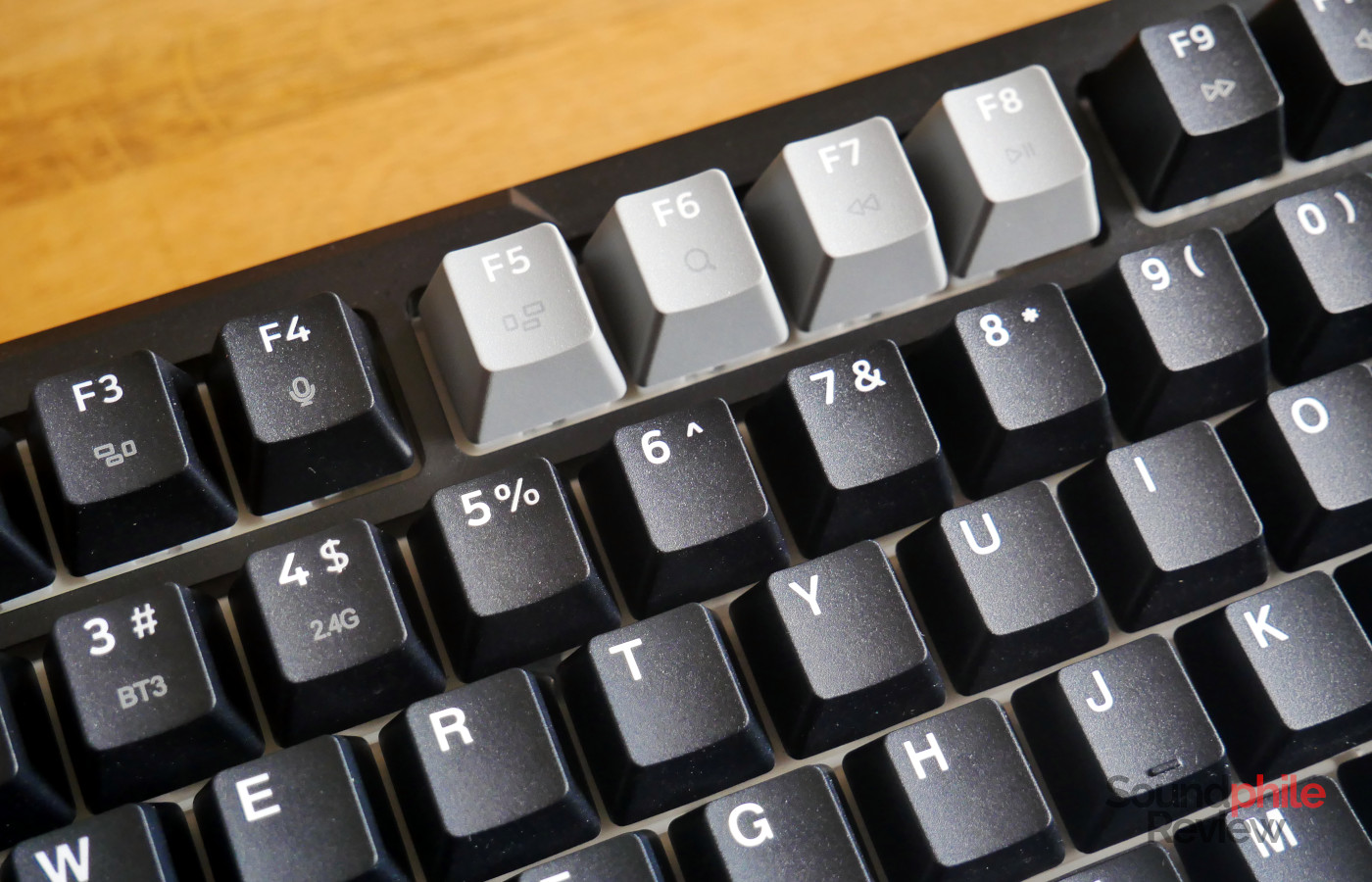
The Redragon K742 comes with an OEM profile keycap set in black, grey and white. The keycaps are made of double-shot PBT with a nice slightly grainy texture; they come with function legends on the relevant keys, however these are printed in grey which results in poor legibility due to the low contrast. The switches are pre-lubed linear RPC, which are made by Redragon themselves; the keyboard’s page on Amazon says that they have an activation force of around 40 g, which places them as relatively lightweight, and a travel distance of 3.6 mm.
I typed this entire review on the keyboard and I used it to play some games as well; the Redragon K742 is very versatile and I found using it very enjoyable in all contexts. It responds super-quickly when gaming and it offers a low enough weight that it is very comfortable to type on, even with longer texts like this very one.
The sound is a good combination of a deeper, “thocky” sound with a brighter, plastic accent. It is louder than other keyboards I have tested, but it is still contained; it reminds me of my old Cooler Master MK730 keyboard. Overall it sounds a lot better than what I thought the plastic chassis would, and it competes with much more expensive metal boards.
Battery Life
The Redragon K742 comes with a 4,000 mAh battery, which is quite standard and offers a very long battery life. As I am typing this, I have been using the keyboard for two weeks with RGB lighting turned on and there is still plenty of charge left.
Final Thoughts
The progress over the past few years in terms of what is accessible at an affordable price is evident. A sub-$100 board like the Redragon K742 now sounds and feels like a high-end keyboard from a few years ago. While it doesn’t have all the bells and whistles of contemporary high-end boards, the K742 has everything you need and more, including N-key rollover, wireless connections, and hot-swap switches, not to mention a wide variety of RGB effects. Add to this a long battery life and a very pleasant typing experience, and you get a keyboard which is really interesting for $80. Which is why I think it’s easy to recommend it if you are looking for a complete, versatile mechanical keyboard with an entry-level price.

